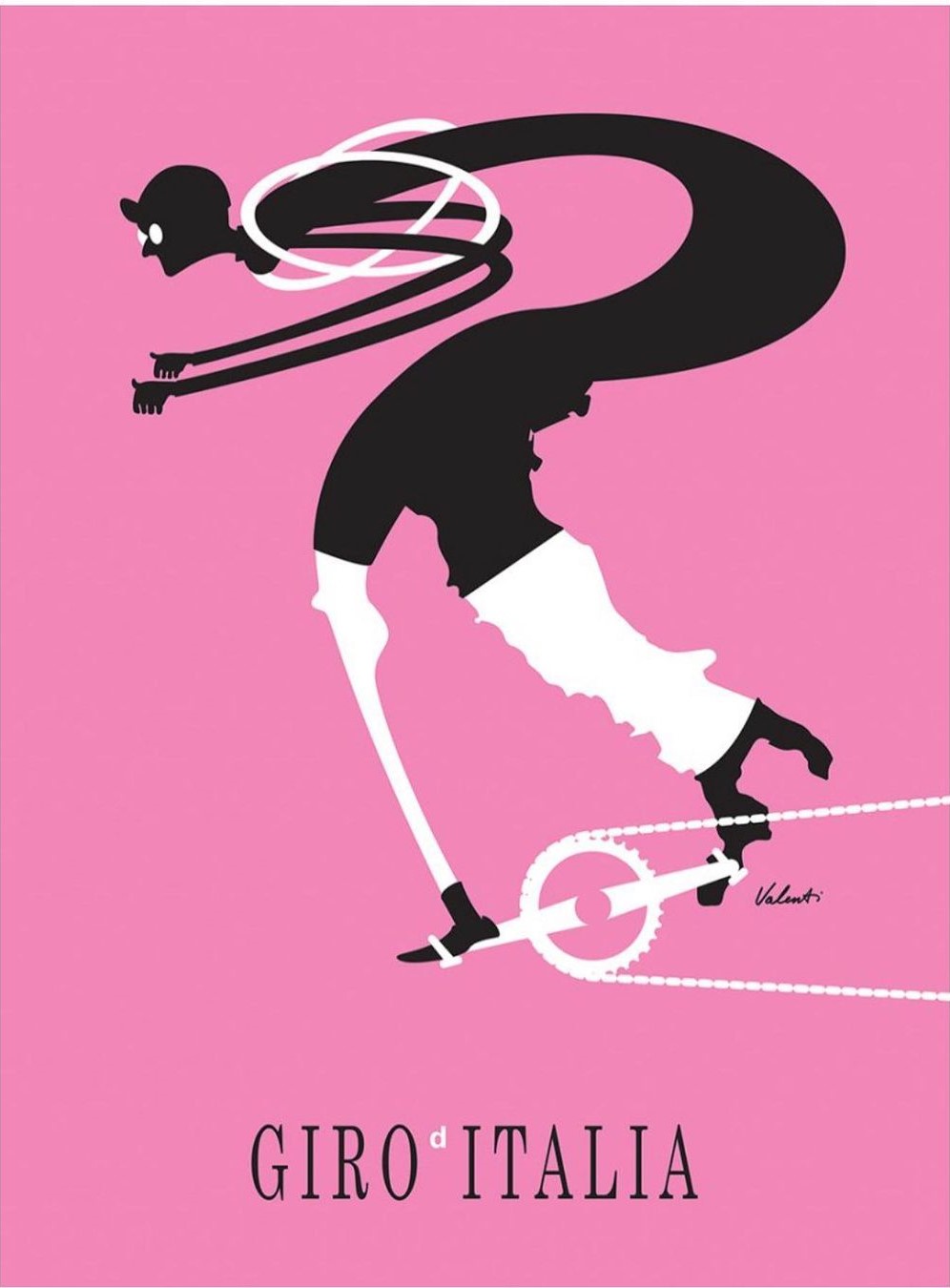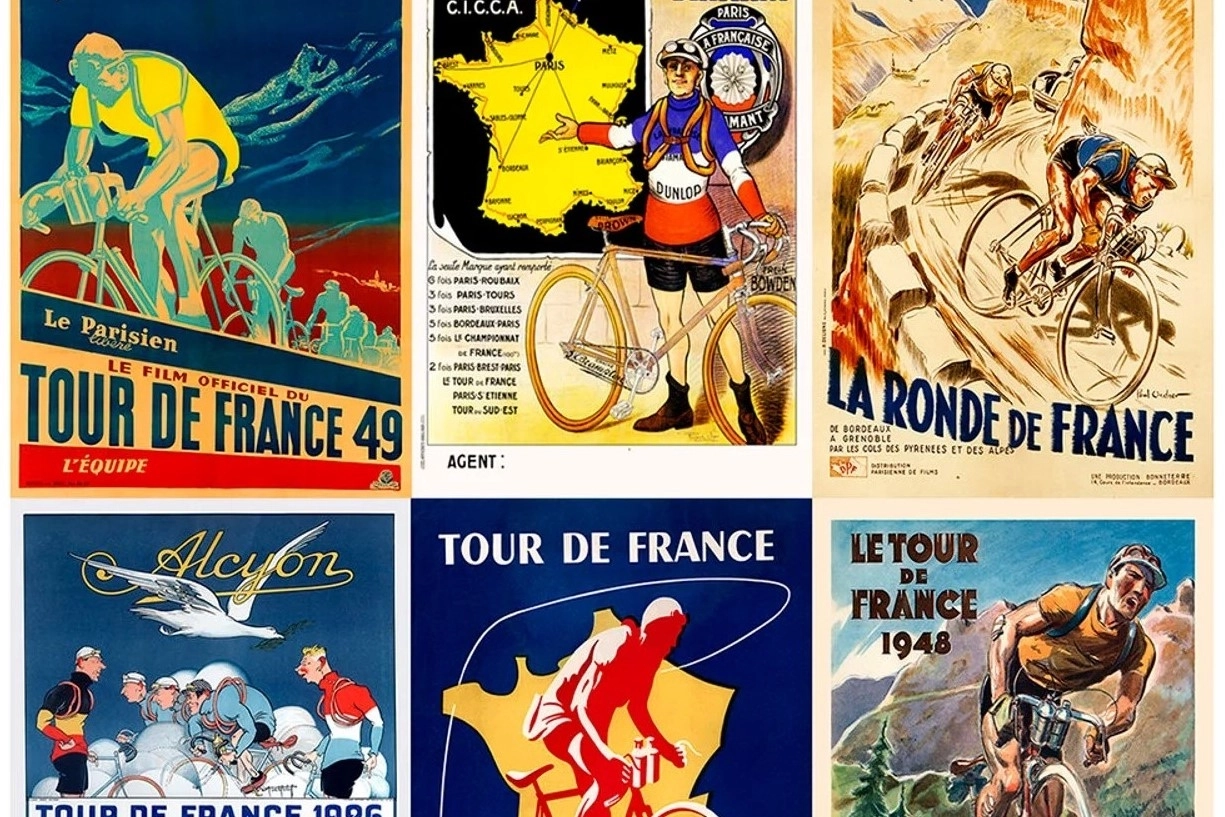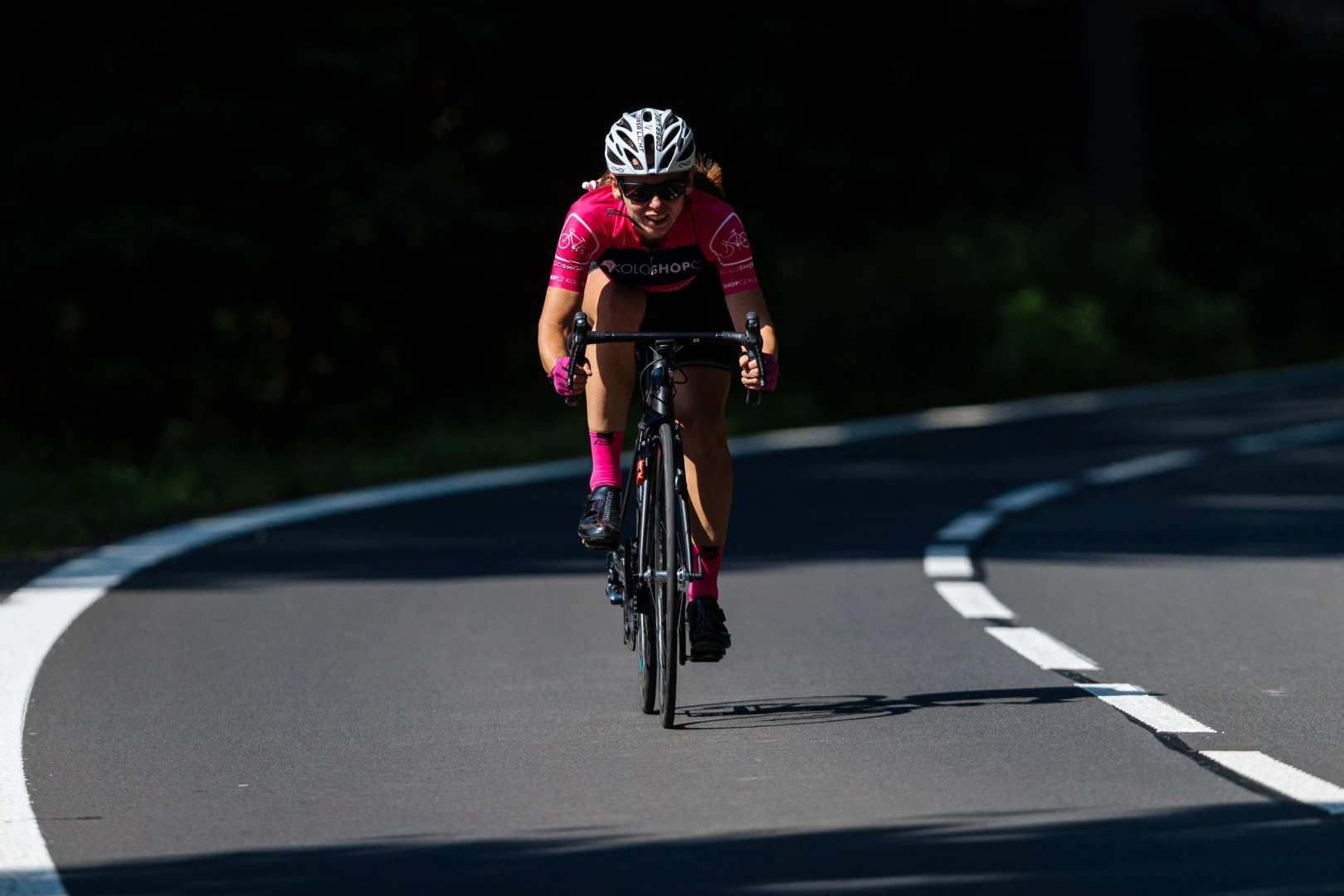From the very beginning of grand tours, the world of competitive cycling has been looking for progressive ways to increase the publicity of this rugged but beautiful and attractive sport. Pictures in the daily press and printed posters have successfully met this need. In an era when households did not yet have radio or televisions, cheaper printing technology and the mass distribution of printed material in the early 20th century gave cycling wide publicity across all social classes. Newspaper posters and pictorial supplements helped build the brand of cycling businesses, providing advertising for bicycle manufacturers and race sponsors, and contributing to creating the legend of the grand tours.

This year it has been exactly one hundred and twenty years since the beginning of the Tour de France, the biggest event of the cycling season. The "Old Lady" saw the light of day in 1903, and the second-born Giro d'Italia came into being in 1909. The first year of the Spanish Vuelta took place between the two wars in 1935. Let's take a brief look at these sporting events through the colourful world of posters.

Looking for a Poster Hero with Healthy Genes
In its beginnings, the message of these spectacular sporting events was aimed at building self-awareness, strength and integrity of the nation, as was the rhetoric of the organizers. Henri Desgrange, the first director of the Tour de France, longed for healthy, strong heroes whose example would help bolster the physical health and morale of French men, broken by the debacle of the Franco-Prussian War, in which France lost an incredible 756,000 soldiers. Cycling, as an endurance and strength sport that greatly promotes and develops the will of individuals, headed out to combat the last of the decadent atmosphere of the fin de siècle. Desgrange believed that the path of hard athleticism would develop and strengthen the genetic disposition of French men who would then produce healthy offspring.

Giants, Road Labourers and Fighters in the Leading Roles
Road bicycle racing at the beginning of the 20th century was certainly nothing easy. Cyclists logged incredible distances, which are mind-boggling even today. For comparison's sake: the inaugural Tour de France in 1903 saw riders complete six stages and a respectable 2,428 kilometres. Today, the riders race for three weeks on their bikes, covering some 3,500 kilometres. Even the length of the individual stages cannot be compared to today: in the past, stages of 482 kilometres were no exception. Today, the longest stages of the grand tours are around 200 kilometres.
Without the necessary gears, escorts and mechanical vehicles, the "road labourers" - as they were called at the time - ascended unpaved, rocky and often muddy narrow mule-paths through mountain passes towards the Alpine and Pyrenean giants. On their way might have run into smugglers at best, bears at worst. It is the steep mountain climbs, reaching heights of up to 2,802 metres at their highest points, that are most attractive to spectators today. In the mountains, it becomes clear who among the competitors can endure the hardships, not give up and reach the finish line. This was true back then and it is still true today. The Tour de France has built a myth around its riders, showing them as giants triumphing over mountains. The struggle of modern technical civilisation against the defiant forces of nature was also reflected in cycling at the beginning of the 20th century and became its driving principle.

No Women at the Races
In 1908, the first woman to take part in the Tour de France was Marie Marvingt, but in the end, she was not given permission, so instead she rode behind the peloton throughout the Tour and finished unofficially. Women were denied regular participation in the race and the reasons why would make us laugh. The main reason, of course, was fear of female emancipation, backed up by curious statements from doctors who claimed, quite seriously, that cycling provided women with a substitute source of sexual pleasure that led them away from the marital bedroom and childcare. The medical authorities of the time portrayed women as too passive, irrational and dreamy, and proclaimed that they had no business in the realms of politics, sport or science.
Female Beauty Sells Bicycles Well
Women on bicycles still do appear on posters from the beginning of the 20th century, but more as ethereal, dreamy and submissive long-haired fairies. In this context, of course, it was not a question of female emancipation, but in many cases a targeted promotion of goods through female beauty and elegance. The first sports-themed posters appeared in France between 1870 and 1885, and prominent among them were posters depicting the advantages of the bicycle, which had become a symbol of modern industrial consumer society.

The famous Moravian-born author of the Slavic Epic, Alfons Mucha, who moved to Paris in the 1880s, where he worked as an illustrator, graphic artist and designer influenced by the decorative style of French Art Nouveau, also depicted women in his cycling advertisement posters.

Grand Tour as a Societal Phenomenon
The Tour de France, as well as the Giro and the Vuelta, attract spectators mainly thanks to the relaxed atmosphere of the races, which is reflected in the incredible number of viewers who come to the cycling events every year in caravans or symbolically on a bike to cheer on their favourites. The global viewership of the three-week races has also been growing every year. According to surveys, the Tour de France is watched by about 3.5 billion TV viewers each year, which is about 43% of the world's population. In terms of viewership and popularity with spectators, the Tour is, in short, a society-wide phenomenon that does not just affect a small group of sports enthusiasts.
The unique atmosphere of the individual tours is captured on the posters by contemporary American artist Michael Valenti, whose renderings of legendary racers and the whole atmosphere of the event are guaranteed to entertain the audience.



You can find Michael Valenti’s complete work either here or on his Instagram.





